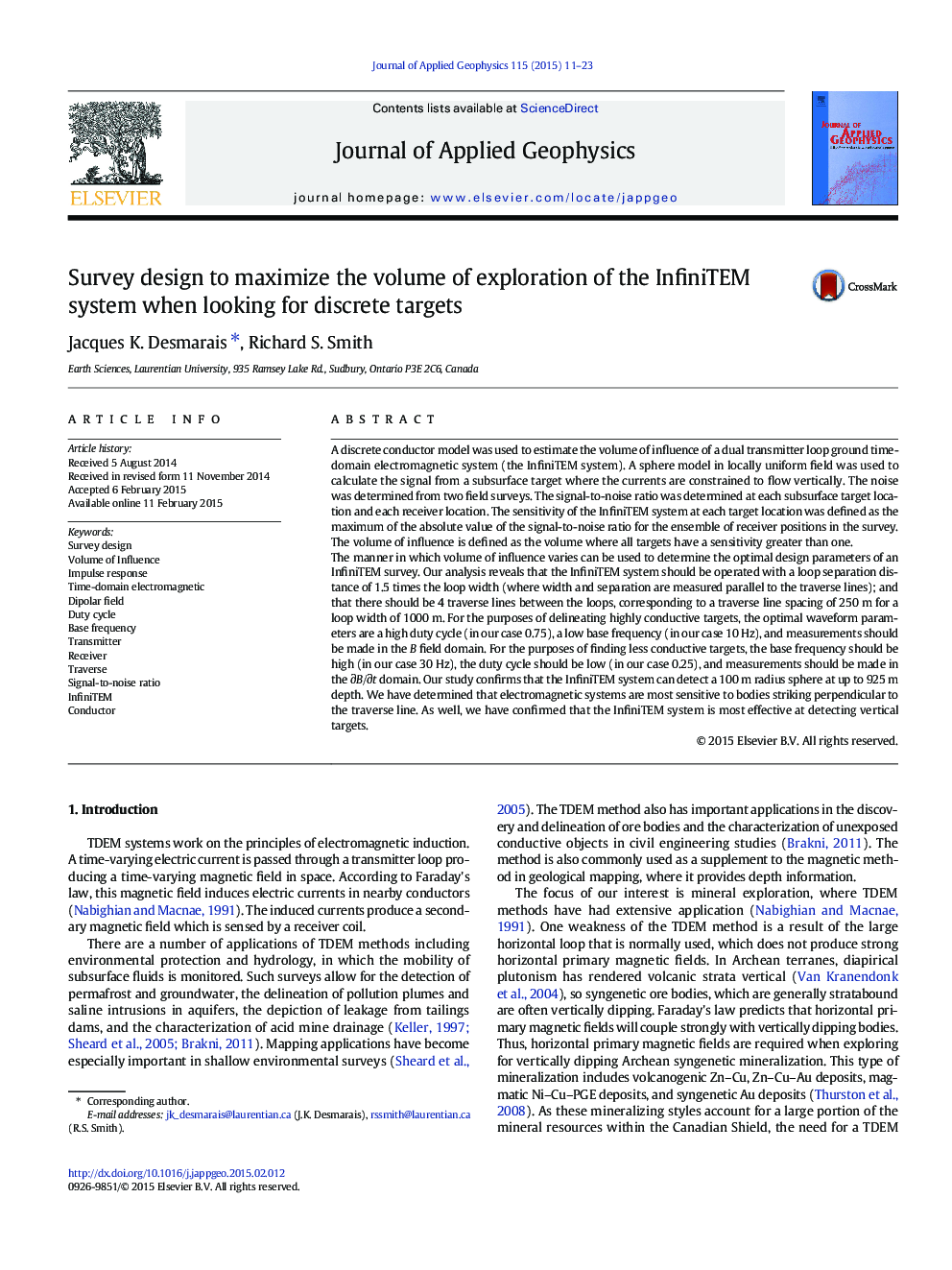| Article ID | Journal | Published Year | Pages | File Type |
|---|---|---|---|---|
| 6447190 | Journal of Applied Geophysics | 2015 | 13 Pages |
Abstract
The manner in which volume of influence varies can be used to determine the optimal design parameters of an InfiniTEM survey. Our analysis reveals that the InfiniTEM system should be operated with a loop separation distance of 1.5 times the loop width (where width and separation are measured parallel to the traverse lines); and that there should be 4 traverse lines between the loops, corresponding to a traverse line spacing of 250Â m for a loop width of 1000Â m. For the purposes of delineating highly conductive targets, the optimal waveform parameters are a high duty cycle (in our case 0.75), a low base frequency (in our case 10Â Hz), and measurements should be made in the B field domain. For the purposes of finding less conductive targets, the base frequency should be high (in our case 30Â Hz), the duty cycle should be low (in our case 0.25), and measurements should be made in the âB/ât domain. Our study confirms that the InfiniTEM system can detect a 100Â m radius sphere at up to 925Â m depth. We have determined that electromagnetic systems are most sensitive to bodies striking perpendicular to the traverse line. As well, we have confirmed that the InfiniTEM system is most effective at detecting vertical targets.
Keywords
Related Topics
Physical Sciences and Engineering
Earth and Planetary Sciences
Geophysics
Authors
Jacques K. Desmarais, Richard S. Smith,
